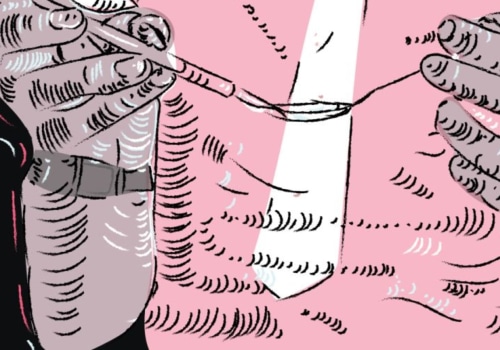Heroin Purity & Types: What Does Heroin Look Like?
Heroin is a highly addictive drug that is a powerful opioid derived from morphine, a natural substance extracted from poppy plants. It is a central nervous system depressant that produces a feeling of euphoria and pain relief.
Heroin generally comes in several forms, and each form has a different appearance, method of use, and effect on the body. In addition to different forms, heroin purity can also vary greatly, which makes it difficult to determine the exact dosage. Pure heroin is typically odorless and has a consistent appearance when uncut or unadulterated.
In this article, we will explore the types of heroin based on purity and appearance.
Different Types of Heroin Forms
Heroin is a highly addictive and illegal drug that is derived from morphine, a natural substance found in the opium poppy plant. It is a powerful central nervous system depressant that produces a feeling of euphoria and pain relief. Heroin is available in several forms, and each form has a different appearance, method of use, and effect on the body. The substances mixed with heroin, such as cutting agents or impurities, can affect its appearance, potency, and health risks. In this article, we will explore the different types of heroin forms.
Powder Heroin Powder heroin is the most common form of heroin found on the streets. It typically appears as a white or brown powder and is easily dissolved in water. Powder heroin is usually sold in small plastic bags or wrapped in paper. The purity of powder heroin can vary greatly, which makes it difficult to determine the exact dosage. Common cutting agents include powdered milk and substances such as sugar, which are mixed to dilute the drug and increase quantity.
Black Tar Heroin Black tar heroin, known as black tar, is a black sticky substance that resembles tar or roofing tar. It is primarily produced in Mexico and is commonly smuggled into the western United States. Black tar heroin is less pure than powder heroin, and it contains impurities such as dirt, ash, and other contaminants. It is usually sold in small chunks or as a powder.
White Heroin White heroin is a high purity heroin that is usually found in Europe. It is a fine white powder that is more potent than other forms of heroin. White heroin is often snorted or smoked due to its purity, and is sold in small glassine envelopes. It is more expensive than other types of heroin.
Brown Heroin Brown heroin is a lower purity form of heroin that is commonly found in Europe and Asia. It is a coarse powder that can appear as light brown to dark brown, indicating it is less refined and contains more impurities. Brown heroin is usually sold in small packets or vials.
Heroin Pills Heroin pills are a less common form of heroin that is usually found in Southeast Asia. They are small tablets that are made by compressing powdered heroin into a pill form. Heroin pills can be swallowed or crushed and snorted.
Heroin Wax Heroin wax is a form of heroin that has become increasingly popular in recent years. It is a concentrated form of heroin that is similar to marijuana wax or dabs. Heroin wax is produced by heating and purifying heroin until it forms a wax-like substance. It can be smoked or vaporized using a special device.
Cheese Heroin Cheese heroin is a combination of black tar heroin and over-the-counter antihistamines, such as diphenhydramine. It is usually found in the Dallas-Fort Worth area and is popular among young users. Cheese heroin is a dangerous combination that can cause respiratory depression, seizures, and death. The street slang term "hell dust" is sometimes used for heroin.
Fentanyl-Laced Heroin Fentanyl-laced heroin is a growing problem in the United States. Fentanyl and other synthetic opioids are sometimes added to heroin to increase its potency, but this practice can be deadly. Fentanyl-laced heroin has been responsible for a significant increase in overdose deaths in recent years.
Heroin Capsules Heroin capsules are a less common form of heroin that is usually found in Southeast Asia. They are small capsules that contain powdered heroin. Heroin capsules can be swallowed or opened and the contents snorted.
Heroin Rocks Heroin rocks are a form of black tar heroin that has been heated and formed into small, rock-like pieces. Heroin rocks can be smoked or dissolved in water and injected.
Why Do People Use Heroin?
Heroin is a highly addictive and illegal drug that is derived from morphine, a natural substance found in the opium poppy plant. It is a powerful central nervous system depressant that produces a feeling of euphoria and pain relief. Despite its illegal status and numerous health risks, people continue to use heroin. In this article, we will explore the reasons why people use heroin.
Pain Relief
One of the primary reasons why people use heroin is to relieve pain. Heroin is a potent painkiller that can provide immediate relief from physical and emotional pain. It is often used by individuals who suffer from chronic pain conditions, such as cancer or arthritis.To Get High
Another reason why people use heroin is to achieve a euphoric high. Heroin produces a rush of pleasurable sensations and can induce feelings of relaxation and happiness. For some individuals, using heroin is a way to escape from the stresses of everyday life and to experience a heightened sense of pleasure.To Cope with Trauma or Stress
Heroin is also used as a coping mechanism for individuals who have experienced trauma or stressful life events. It can help to numb emotional pain and provide temporary relief from feelings of sadness, anxiety, or depression. However, prolonged use of heroin can exacerbate these conditions and lead to addiction.Peer Pressure and Social Influences
Peer pressure and social influences can also play a role in why people use heroin. Individuals who are surrounded by others who use drugs may feel pressured to use drugs themselves in order to fit in or be accepted. Additionally, some individuals may begin using heroin out of curiosity or experimentation. Younger users and young adults are particularly vulnerable to trying heroin through snorting or smoking, often to avoid the stigma associated with injection drug use, but may eventually progress to injection as their tolerance increases.Addiction
Once an individual begins using heroin, addiction can quickly take hold. Heroin is highly addictive, and repeated use can lead to physical dependence and withdrawal symptoms. Increased tolerance develops over time, causing users to consume larger quantities of heroin to achieve the same effect. As tolerance increases, some users transition from snorting or smoking to injection drug use to experience stronger effects, which raises the risk of overdose and physical dependence. Individuals who are addicted to heroin may continue to use the drug despite negative consequences, such as legal problems, health issues, or strained relationships.Easy Access and Low Cost
Heroin is often relatively easy to obtain and is relatively inexpensive compared to other drugs. For some individuals, the low cost and easy availability of heroin make it an attractive option.Mental Illness
Some individuals who suffer from mental illness may turn to heroin as a way to self-medicate or alleviate symptoms of their condition. This can include individuals who suffer from depression, anxiety, bipolar disorder, or other mental health disorders.
White Powder Form of Heroin
White powder heroin is a form of heroin that is often more refined and pure than other forms. It is a fine white or off-white powder that is easily dissolved in water and can be snorted, smoked, or injected. White powder heroin can be extremely potent and dangerous, and it is important to understand the risks associated with its use.
Purity and Potency
White powder heroin is often more pure and potent than other forms of heroin, such as black tar heroin. This is because it is more refined and processed, and may not contain the impurities and adulterants found in other forms of heroin. As a result, the risk of overdose and other health complications is higher with white powder heroin. Users often do not know the actual strength of the heroin they are using, which further increases the risk of overdose and unpredictable effects.Method of Use
White powder heroin can be used in several ways, including snorting, smoking, or injecting. Injecting white powder heroin carries the highest risk of overdose and other health complications, as it is absorbed into the bloodstream more quickly than other methods of use. When smoked, burn marks on foil or other surfaces can be a sign of heroin use.Health Risks
The use of white powder heroin carries numerous health risks, including addiction, overdose, and the transmission of infectious diseases such as HIV and hepatitis. The purity and potency of white powder heroin can vary greatly, making it difficult to determine the appropriate dosage. This can lead to accidental overdose and other negative health consequences.Legal Consequences
The possession, sale, and use of heroin, including white powder heroin, is illegal in most countries. If caught with heroin, individuals can face significant legal consequences, including fines, imprisonment, and a criminal record that can impact their future opportunities and relationships.Addiction and Withdrawal
Heroin use can quickly lead to addiction, which is characterized by a compulsive need to use the drug despite negative consequences. As tolerance develops, users need increasing amounts of heroin to achieve the same effect they experienced initially, which raises the risk of overdose and deepens dependence. Individuals who are addicted to heroin may experience withdrawal symptoms when they try to quit using the drug, which can include nausea, vomiting, sweating, insomnia, anxiety, and depression.Treatment Options
Treatment for heroin addiction can include medication-assisted treatment, behavioral therapy, and support groups. It is important to seek professional help if you or someone you know is struggling with heroin addiction, as it can be difficult to overcome without professional support.
What Does Heroin Look Like?
Heroin can come in various forms and appearances, depending on how it is processed and what other substances it is mixed with. Street heroin, which is commonly sold illicitly, often contains impurities and cutting agents, making its appearance variable and increasing health risks for heroin users. Here are some of the common appearances of heroin:
White Powder
White powder heroin is a fine, powdery substance that is often more refined and pure than other forms of heroin. It is commonly snorted or dissolved in water and injected. However, the purity and potency of white powder heroin can vary greatly, making it difficult to determine the appropriate dosage and increasing the risk of overdose.Brown Powder
Brown powder heroin is a less refined form of heroin that may contain impurities and other substances. It is often smoked or dissolved in water and injected. Brown powder heroin can range in color from light tan to dark brown and may have a powdery or granular texture.Black Tar
Black tar heroin is a sticky, tar-like substance that is often smoked or dissolved in water and injected. It is darker in color than other forms of heroin and may have a strong vinegar-like odor. Black tar heroin is often less refined than other forms of heroin and may contain impurities and other substances.Small Pellets
Small pellets of heroin, often referred to as “buttons,” are small, ball-shaped pieces of heroin that are often found in South American countries. They are typically brown or beige in color and may be sold in small plastic bags or wrapped in foil.Capsules
Capsules of heroin are small, gelatinous capsules that contain a powdered form of heroin. They are often sold on the street and can be swallowed or dissolved in water and injected.
Heroin users are at risk for poor health due to contaminated street heroin and the complications that arise from impurities and cutting agents.
Black Tar Heroin
Black tar heroin is a type of heroin that is sticky and tar-like in appearance. It is often produced in Mexico and is commonly found in the southwestern United States. Black tar heroin gets its name from its dark color and sticky, tar-like texture, which is the result of its unique production process. Heroin production methods for black tar heroin often involve the use of acetic acid, which contributes to its distinctive consistency, impurities, and strong odor. The use of acetic acid in the manufacturing process can also impact the purity of the final product. Black tar heroin is associated with significant health risks, including a high potential for addiction, infections, abscesses, and vein damage.
Take Our Substance Abuse Self-Assessment
Have you ever felt that you should cut down on your substance use?
Have you ever felt annoyed or angry when someone has commented on your substance use?
Have you ever felt guilty or ashamed about your substance use?
Have you ever used substances to cope with stress, anxiety, or depression?
Have you ever missed work, school, or other important obligations because of your substance use?
Have you ever continued to use substances despite experiencing negative consequences, such as legal problems or relationship issues?
Have you ever experienced withdrawal symptoms when you tried to stop using substances?
If you answered yes to any of these questions, it may be helpful to seek professional help and support to address your substance use. Substance abuse can have serious negative consequences on your physical and mental health, as well as your relationships and overall quality of life. Seeking help is a sign of strength and courage, and there are many resources available to support you on your journey towards recovery.
How to Treat Heroin Overdose and Addiction
Heroin overdose and addiction can be life-threatening and require immediate medical attention. Early intervention and seeking treatment are crucial steps in addressing heroin addiction and preventing further harm. Professional treatment and heroin addiction treatment, including comprehensive rehab programs, are essential for recovery. The recovery process often involves ongoing support and careful management of withdrawal symptoms. There are various treatment options available to help individuals overcome heroin addiction and prevent future overdoses.
Overdose Treatment
If someone is experiencing a heroin overdose, it is important to call 911 or seek medical attention immediately. Heroin overdose can cause respiratory depression, which often results in slow and shallow breathing. Shallow breathing can be life-threatening and may lead to brain damage or death if left untreated. The following are some common treatments for heroin overdose:
Naloxone: Naloxone, also known as Narcan, is a medication that can quickly reverse the effects of an opioid overdose, including heroin. It is available in various forms, including an injection, nasal spray, and auto-injector. Naloxone can be administered by medical professionals or by individuals trained in its use.
Artificial Respiration: In some cases, medical professionals may need to perform artificial respiration or ventilation to help the person breathe until the effects of the heroin wear off.
Medication-Assisted Treatment Medication-assisted treatment (MAT)
A common form of treatment for heroin addiction that involves the use of medications, such as methadone, buprenorphine, or naltrexone, to help manage withdrawal symptoms and cravings. MAT can be administered in a variety of settings, including outpatient clinics and inpatient programs.
Behavioral Therapy Behavioral therapy
Cognitive-behavioral therapy (CBT) or contingency management, is often used in conjunction with medication-assisted treatment to help individuals overcome heroin addiction. Behavioral therapy can help individuals develop coping skills, identify triggers for drug use, and learn healthier ways of managing stress and emotions.
Support Groups Support groups
Narcotics Anonymous or SMART Recovery, can provide individuals with a sense of community and support as they work towards overcoming heroin addiction. Support groups can also offer resources and information on additional treatment options and coping strategies.
It is important to note that overcoming heroin addiction is a process that often requires ongoing treatment and support. If you or someone you know is struggling with heroin addiction, it is important to seek professional help and support as soon as possible.
What does heroin smell like?
Heroin has a distinctive smell that has been described as a strong, vinegar-like odor. According to the National Institute, the smell of heroin is often compared to the smell of vinegar or vinegar mixed with rotten eggs. This smell is due to the chemicals used in the production of heroin and can be detected even in small amounts.
The smell of heroin can also be influenced by the substances mixed with it, including impurities, additives, and cutting agents. In recent years, synthetic opioids such as fentanyl are often added to heroin, which can contribute to a more chemical or acidic odor and increase the drug's danger. It is important to note that while the smell of heroin can be a clue to its presence, it is not a reliable indicator of its purity or potency. Heroin can be cut with a variety of other substances, which can affect its smell and appearance. In addition, some individuals may not be able to detect the smell of heroin due to a diminished sense of smell or other factors.
It is also important to exercise caution when attempting to identify the smell of heroin, as the drug can be dangerous and potentially deadly. If you suspect that someone is using or has been exposed to heroin, it is important to seek professional help and support immediately.
Cutting Agents That May Affect the Look of Heroin
Heroin sold on the street is often cut or mixed with other substances to increase its volume, potency, or profits. These cutting agents can affect the look, texture, and smell of heroin, making it difficult to identify the drug based on appearance alone. Some common cutting agents used with heroin include:
Sugar: Sugar is often used as a cutting agent for heroin, as it can increase the volume of the drug without affecting its potency. Sugar can give heroin a more powdery texture and a sweeter taste.
Caffeine: Caffeine is sometimes added to heroin to increase its stimulant effects and make the drug more addictive. Caffeine can give heroin a more crystalline appearance and a bitter taste.
Procaine: Procaine is a local anesthetic that is sometimes used as a cutting agent for heroin. Procaine can give heroin a numbing effect, making it more difficult to detect its effects.
Quinine: Quinine is a medication used to treat malaria that is sometimes added to heroin to increase its bitter taste and give the drug a more powdery texture.
Fentanyl: Fentanyl is a potent synthetic opioid that is sometimes mixed with heroin to increase its potency. Fentanyl can be deadly in small amounts and is responsible for many overdose deaths.
It is important to note that these cutting agents can have serious negative health consequences, including overdose and addiction. In addition, the use of cutting agents can make it difficult to determine the purity and potency of the heroin, increasing the risk of overdose and other health complications. For those who inject heroin, contaminants and cutting agents can lead to bacterial infections, kidney disease, and infections of the heart lining, further increasing the risk of severe health problems. If you or someone you know is struggling with heroin addiction, it is important to seek professional help and support as soon as possible.






